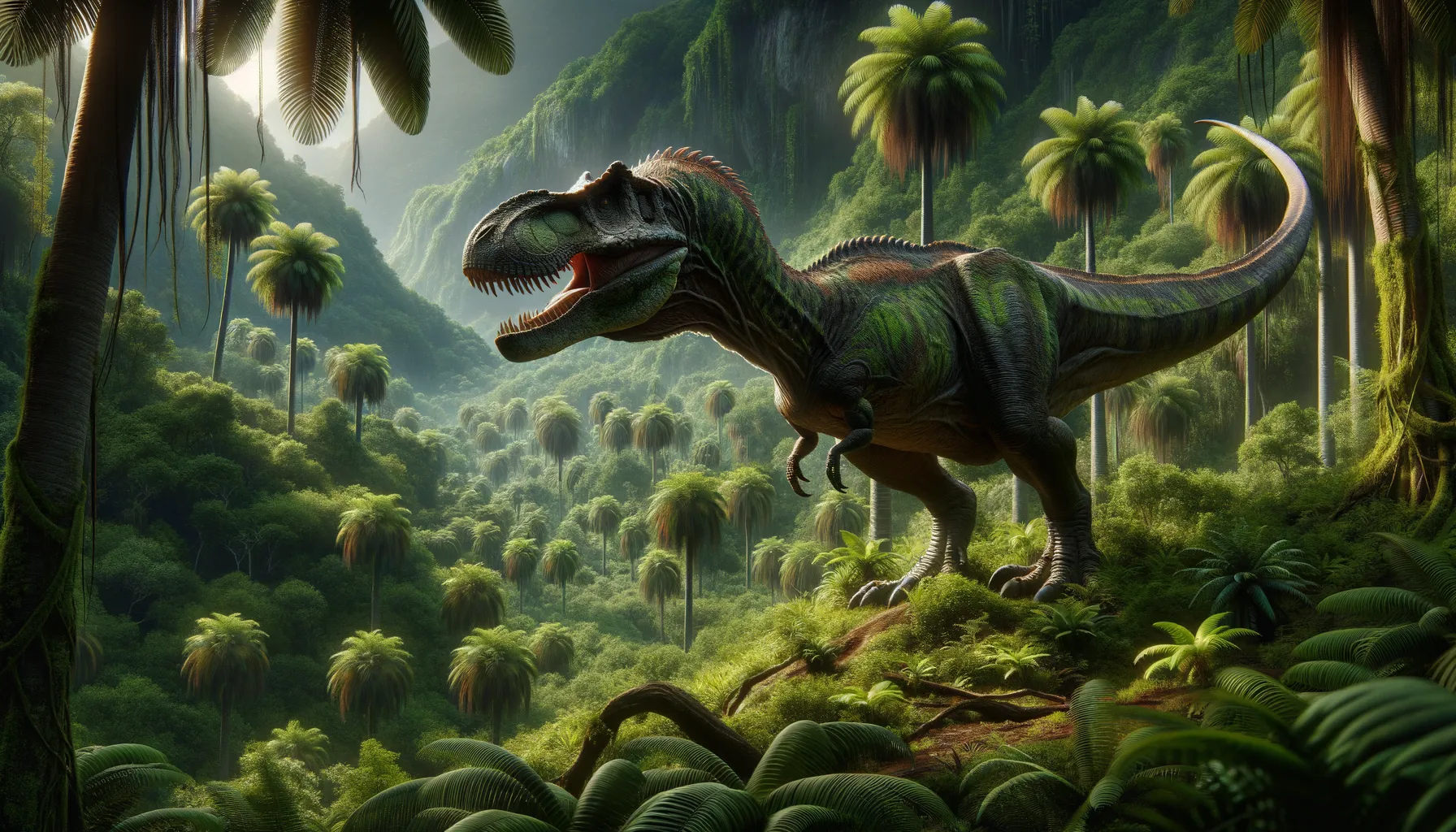
Dandakosaurus
A fierce predator of Jurassic India.
Period
Jurassic
Length
Could reach lengths up to 10 meters.
Height
Estimated around 3 meters tall.
Weight
Approximately 1 tonne.
Dandakosaurus was a Jurassic theropod dinosaur known for its sizeable build and carnivorous diet. Originating from present-day India, it offered a glimpse into the diversity of theropods in the region during the Jurassic period. While complete fossil records are scarce, Dandakosaurus likely shared many characteristics with other theropods like robust jaws and strong hind limbs, which assisted in its predatory lifestyle.
Diet
Dandakosaurus was carnivorous, primarily feeding on smaller dinosaurs and possibly scavenging. Its diet likely consisted of whatever prey was available in its environment, including fish and small mammals.
Hunting
It may have used its strong hind limbs and sharp teeth to ambush or chase down prey. Pack behavior could have been possible, though evidence remains inconclusive.
Environmental challenges
Dandakosaurus faced changing climates and geological activity in its region. Shifts in sea levels and volcanic activity could have affected its food sources. Competition with other predators and plant-eating dinosaurs could have presented additional survival challenges.
Speed
Likely moderately fast with agile movement.
Lifespan
Estimated to live several decades.
First discovery
Discovered in the early 1980s in India.
Fun Facts
- Dandakosaurus was a dinosaur that lived during the early Jurassic period, around 190 million years ago.
- Its fossils were first discovered in India, specifically in the Dandak Forest, which is how it got its name.
- Dandakosaurus was one of the theropod dinosaurs, which means it was likely a carnivore.
- This dinosaur would have walked on two legs, making it a bipedal creature, similar to other theropods.
- Compared to its more famous cousins like Tyrannosaurus rex, Dandakosaurus was relatively small and less well-known.
- Despite being a lesser-known dinosaur, the discovery of Dandakosaurus has helped paleontologists understand more about the diversity of dinosaur species in ancient India.
- The study of Dandakosaurus is still ongoing, with paleontologists eager to learn more about its lifestyle and environment.
Growth and Development
This dinosaur likely hatched from eggs and went through rapid growth phases to reach maturity. Juveniles needed to quickly adapt and find food to survive into adulthood. Growth rates would have been influenced by environmental conditions and food availability.
Habitat
Dandakosaurus lived in what is now central India, where it roamed dense forests and open plains. Its habitat was rich with rivers and lush vegetation, supporting a diverse ecosystem. Seasonal variations may have driven migrations within its territory.
Interaction with other species
As a predator, it would have interacted primarily with herbivorous dinosaurs, either as prey or competition for resources. Dandakosaurus's interaction with other theropods could include territorial disputes. Fossil evidence of cohabitation with smaller species may indicate a complex ecosystem.
Natural lifespan
The natural lifespan of Dandakosaurus might have been around 30 years.
Reproduction
Reproductive behavior probably involved laying clutches of eggs, similar to other theropods. Nesting sites might have been selected in secluded locations to protect the young from predators. Parental care, if any, remains speculative but possible.
Social behaviour
It remains uncertain if Dandakosaurus was solitary or social, though pack hunting could have been advantageous. Territory-defending behaviors might have occurred, especially in areas rich with prey. Social interactions would depend on environmental pressures and food availability.
Fossil locations
Fossils of Dandakosaurus have primarily been found in the Pranhita–Godavari basin of central India. These locations provide vital clues to its existence during the Jurassic period. Continued excavation in this region may yield additional insights into its biology and ecology.
